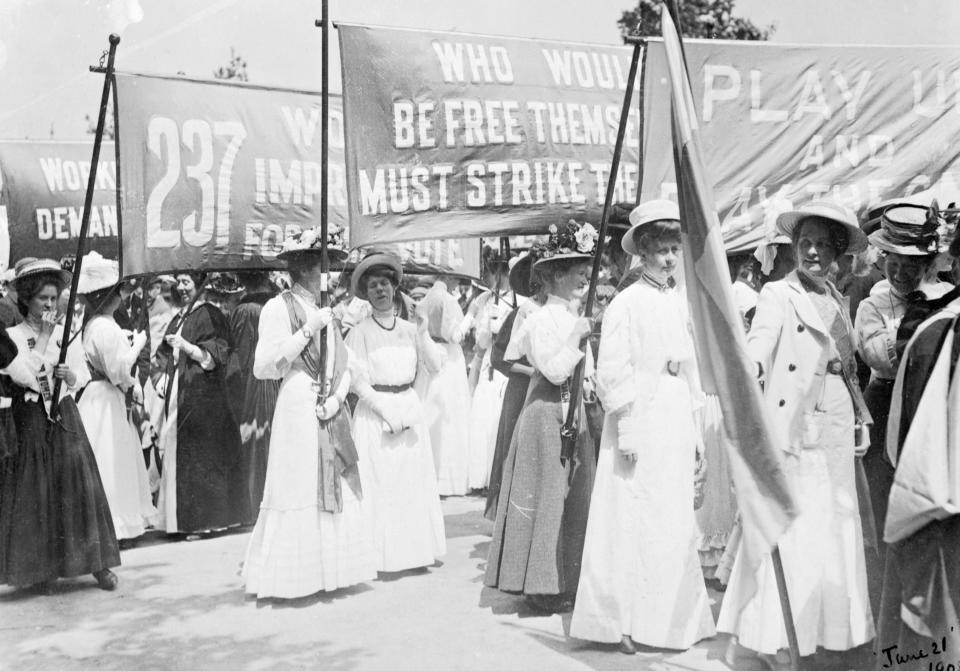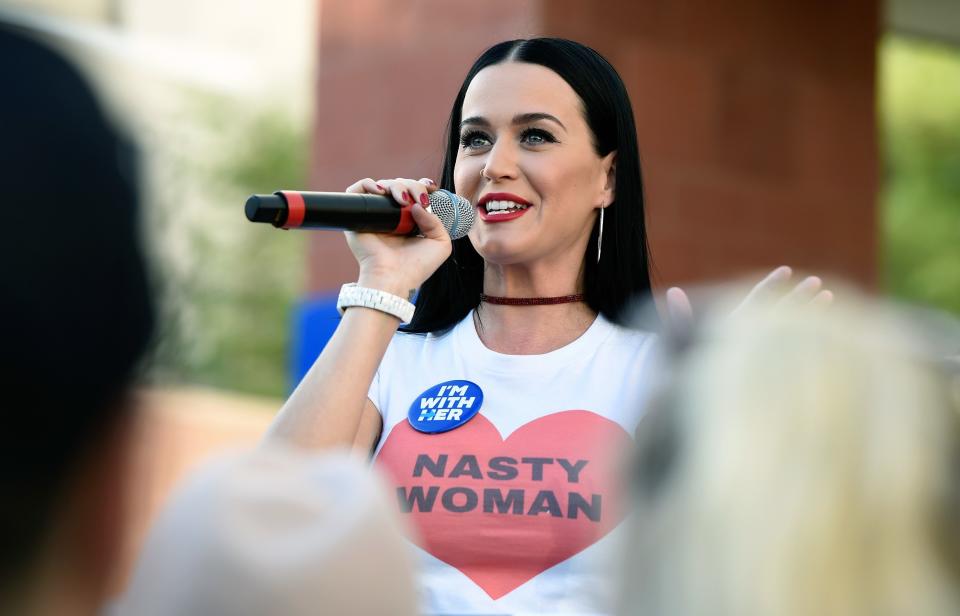Can Wearing a Political T-shirt Create Social Change?
By Kari Molvar. Photos: Getty Images.
Last fall, when Maria Grazia Chiuri sent down a T-shirt that read, “We Should All Be Feminists” on the runway for her debut spring 2017 presentation for Dior, the pro-women rallying cry rang out loud and clear. Fast forward to the fallout after the election, and the desire for such slogans—whether on T-shirts, signs or patches—has now risen to a fever pitch, with brands like Versace, Prabal Gurung, and Tome incorporating politically-charged messaging into their recent fall 2017 collections.
Clothing, of course, has always served as a form of self-expression. The recent wave of activist-minded garments not only represents a symbol of solidarity against the current political administration, but also as a form of bonding among those who share the same beliefs. Whether printed on tops, tunics, or jackets, these messages stand out as a visual marker of what you believe in—and that can be a powerful catalyst for change.
The pulse of the movement isn't limited to the runways—it's found on a more grassroots level, as well. That’s where DIY artists and creative polymaths have been producing some of the most culturally relevant and virally strong apparel, putting out their wares on maker platforms like Etsy as a way to take a stand against Trump’s particular brand of prejudice, false truths, and social injustice. And unlike large-scale fashion houses, which can take months to incubate collections, these independent designers can be more reactive and nimble in the moment.
Amanda Brinkman, the co-founder of Google Ghost, conceived her Zeitgeist-defining “Nasty Woman” T-shirt last October while watching the infamous debate in real time. “I first designed the Nasty Woman shirt moments after Trump uttered the words,” she says. “I was shocked by his audacity, but my initial reaction was that if Trump found a smart, prepared, and qualified woman so threatening that he had to call her names, then that made me a nasty woman, too.” And she didn’t waste any time spreading that message. “I was on my computer during the debate, designed the T-shirt, and put it online before the debate was even over.” Her creation went “viral overnight,” with it quickly gaining traction among A-list celebs, including Katy Perry and Kristen Bell. (“There was one point where Hilary Clinton tweeted a video of Will Ferrell wearing my shirt,” says Brinkman with glee).
Others started making feminist apparel long before Trump stumbled onto the public stage. Rachel Berks, the founder of the hybrid retail store and design studio Otherwild, first put her “The Future is Female” T-shirt into circulation the summer of 2015. “I’ve been interested in reactive political slogans from the 1970s and 1980s,” she says. (In fact, the phrase first appeared on a T-shirt that was made for Labyris Books, a women’s bookstore that opened in 1972. Most recently, Prabal Gurung adopted the slogan for his fall 2017 collection tees). Berks now has an extensive collection of upstanding apparel and accessories, including “Gender is a Drag” and “How Dare You Assume I’m Straight” pieces, which she created in collaboration with Herstory, a curated Instagram project founded by Kelly Rakowski. Getting in the studio is a way of taking action. “We have a dysfunctional body politic, to stay the least,” says Berks. “I feel compelled to find ways of disseminating empowering messages, to which we can speak and dedicate ourselves in our lived practices.”
To combat against the increasing threats of defunding community organizations, many designers of slogan apparel have been donating a portion of the proceeds to such non-profits as a form of resistance. Brinkman’s Nasty Woman T-shirts, for example, have raised more than $126,000 for Planned Parenthood so far. And giving back has been part of the DNA behind Boy Meets Girl, which designer and creative director Stacey Igel launched in 2001. “Contributing to causes that can help make a stand or help one in need gives me a sense of hope that others will follow and continue to show their support,” she says. Every month, Igel releases a limited-edition collection with 10 percent of the sales dedicated to organizations that “impact communities in need in a positive way.” Her most recent cropped sweatshirts, which read, “Women Crush Everyday,” support Planned Parenthood, while her oversized “F*ck Racism” tees give back to the ACLU.
“The fashion industry is an extremely fast-paced environment where it’s a constant race to catch up,” says Igel. “Dedicating myself to other passions of mine allows me to take a step back and see the big picture. It allows me to slow down for a second to breathe and think, how can a make a difference today?” Still, that raises the question: Can wearing outspoken clothing really spark lasting change?
Kristina Haugland, the Le Vine associate curator of costume and textiles at the Philadelphia Museum of Art, believes that such highly visible messages can serve as important conversation starters. “You empower and encourage others to speak up or become more active as well,” she says, adding that political slogans are nothing new. Haugland is currently spearheading an upcoming exhibition, Text in Fashion, that explores the use of words and letters on garments from the 18th century to the present day. “We have a child’s cotton dress from the 1860s, printed with Civil War union shields all over the dress, and then if you look at the French Revolution, colors were used to show your support for various factions.” In the early 20th century, wearing white, she says, became associated with the women’s suffrage movement, similar to how today’s pink hats signify standing up for women’s rights.
But fashion apparel really started to get political in the 1960s and 1970s with the rise in silkscreen printing. The technique made it easier for anyone to print a custom T-shirt to help speak their mind during the Vietnam War protests, says Haugland. Today, people still want to find an outlet for their frustrations. “I’m not the only one to say the country is very polarized, and people are trying to find ways to express an opinion and make their views known,” she says. “It’s a way to add cohesion to groups and show support for people who feel the same way as you do.”
Think of it as a sartorial form of banding together. Or as Brinkman puts it, “When you wear a T-shirt, like the Nasty Woman T-shirt, you’re not only making some of your beliefs known, you’re identifying with a larger group of individuals who feel the same way,” she says. “I’ve given high-fives to women in parking lots wearing the shirt: It’s a simple and positive way to note that we’re on the same team.”
This story originally appeared on Allure.
More from Allure:
10 Celebrity Hairstyles That Make You Look 10 Years Younger
Find the Best Haircut for Your Face Shape
The 9 Prettiest Date-Night Makeup Looks
7 Weird Tricks Stars Use for Looking Great in Photos



